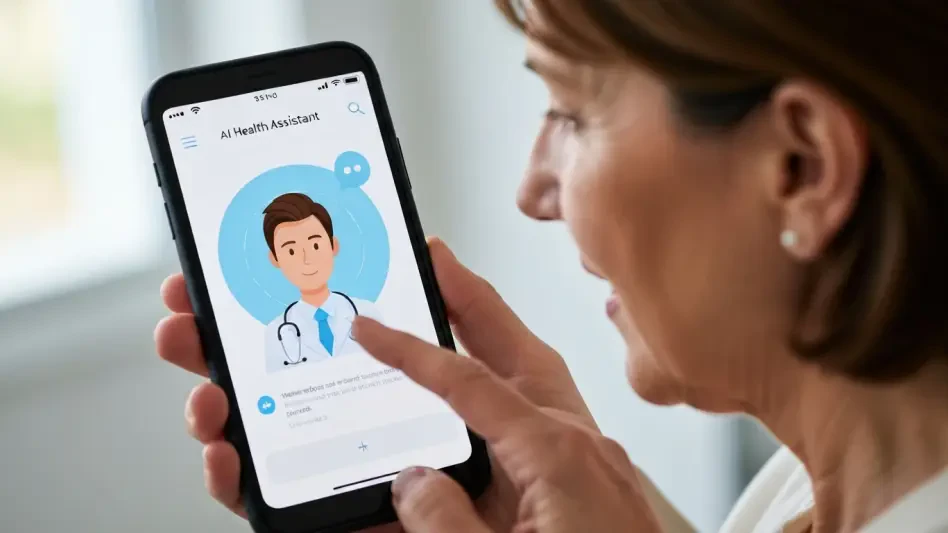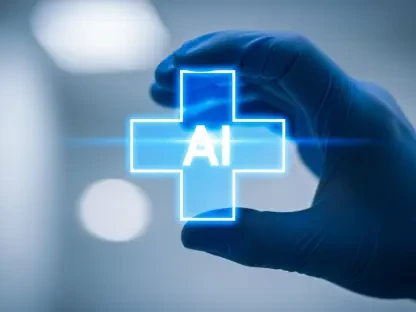What happens when healthcare’s most pressing challenges—overworked clinicians, disconnected patient experiences, and skyrocketing costs—collide with a technology that promises to solve them all? A groundbreaking merger between Get Well and RhythmX AI, forming GW RhythmX under the SymphonyAI Group (SAI Group), offers a glimpse into a future where AI redefines precision care. This union, blending clinical decision-making tools with patient engagement platforms, could be the turning point for health systems struggling to balance efficiency with personalized treatment.
Why This Merger Matters Now
In an era where chronic diseases burden nearly half of the population and operational costs strain even the largest health systems, the need for innovative solutions has reached a critical peak. The formation of GW RhythmX arrives as a timely response, aiming to transform how care is delivered by integrating artificial intelligence into every step of the healthcare journey. This isn’t just another tech partnership; it’s a strategic move to address systemic flaws that have long plagued the industry, from fragmented data to inconsistent patient outcomes.
The significance of this development lies in its potential to create a unified platform that serves both clinicians and patients with equal precision. By leveraging AI to predict risks, streamline workflows, and engage individuals in their care, GW RhythmX positions itself as a catalyst for change at a moment when the healthcare sector is desperate for sustainable progress. This merger signals a shift toward data-driven models that prioritize measurable impact over temporary fixes.
The Power Behind the Union
At the heart of GW RhythmX is the fusion of two distinct yet complementary forces in health tech. RhythmX AI specializes in a personalized care platform that equips physicians with tailored recommendations, identifies at-risk patients, and predicts disease progression with impressive accuracy, as evidenced by its successful pilot with Presbyterian Healthcare Services in New Mexico. Meanwhile, Get Well brings a proven track record in AI-powered patient outreach, helping systems like Kaiser Permanente and Ascension slash hospital readmissions by 65% through targeted engagement campaigns.
This combination integrates over 10 diverse data sources—spanning clinical, payer, financial, and social metrics—alongside electronic health records (EHRs) to deliver actionable insights. Clinicians gain a clearer path to prioritize urgent tasks, while patients receive customized care plans that resonate across various settings. The result is a seamless bridge between operational efficiency and individual needs, setting a new benchmark for what precision care can achieve.
Unlike standalone tools that often create more silos, GW RhythmX aims to unify the healthcare experience. Its ability to optimize workflows through RhythmX AI’s 25,000 clinical validations and enhance patient participation via Get Well’s AI assistant offers a holistic approach. This synergy marks a departure from fragmented systems, promising a more connected and responsive framework for health delivery.
Leadership Perspectives on the Vision
Leaders behind GW RhythmX are vocal about the transformative potential of this merger. SAI Group Chairman Romesh Wadhwani describes the collaboration as a chance to “redefine healthcare through cutting-edge AI and rapid innovation,” highlighting the financial and technological backing that fuels this ambition. His perspective reflects a broader commitment to pushing digital platforms to new heights with generative AI, a focus reinforced by SAI Group’s strategic investments in the sector.
Deepthi Bathina, CEO of GW RhythmX, brings an equally compelling viewpoint, emphasizing the opportunity to “fundamentally change medical practice by orchestrating healthcare data into actionable intelligence.” Her statement points to a future where technology doesn’t just support but actively reshapes clinical decision-making. These insights from top executives underscore a shared belief that AI can serve as more than a tool—it can be the foundation for systemic evolution in care delivery.
Industry observers echo this optimism, noting that the merger aligns with a growing consensus on AI’s role in healthcare. The focus on integrating vast datasets into practical solutions resonates with current trends toward smarter, more adaptive systems. Such alignment between leadership vision and market needs suggests that GW RhythmX is poised to influence not just technology adoption but the very culture of healthcare innovation.
Real-World Impact on Health Systems
For health systems grappling with tight budgets and high patient volumes, GW RhythmX offers immediate, practical benefits. Clinicians can rely on AI-driven insights to focus on critical interventions, supported by seamless EHR integration and extensive clinical validations. This capability reduces the cognitive load on providers, allowing them to address urgent cases without drowning in administrative tasks, a common barrier to effective care.
Financially, the platform aids health systems by optimizing coding and billing directly at the point of care, a feature that can unlock new revenue streams while cutting operational inefficiencies. For diverse populations, the scalability of GW RhythmX means tailored solutions—whether curbing readmissions or enhancing primary care outreach—can be adapted to specific community needs. Starting with pilot programs in targeted departments offers a low-risk way to test and expand based on concrete results.
Patients, too, stand to gain from this innovation through active involvement in their care journeys. Get Well’s AI assistant fosters engagement by delivering personalized guidance, while targeted campaigns help close gaps in treatment adherence. These tools empower individuals to take charge of their health, creating a ripple effect that benefits entire systems through better outcomes and reduced strain on resources.
A Step Forward for Precision Care
Looking back, the merger of Get Well and RhythmX AI into GW RhythmX stood as a defining moment in the evolution of healthcare technology. It tackled deep-rooted challenges by uniting clinical precision with patient-centric engagement, offering a blueprint for how AI could elevate care delivery. Health systems that embraced this platform early on gained a competitive edge, proving that integrated, data-driven approaches were not just feasible but essential.
The next steps for stakeholders involved a focused effort to implement pilot programs, measure outcomes, and scale solutions across broader networks. Collaborating with innovators like GW RhythmX provided a pathway to adapt to changing demands, ensuring that both clinicians and patients benefited from smarter tools. This journey highlighted a crucial truth: technology, when thoughtfully applied, had the power to transform obstacles into opportunities.
Beyond immediate adoption, the broader industry faced a call to rethink how care models could evolve with AI at the helm. Exploring partnerships, investing in scalable platforms, and prioritizing patient empowerment emerged as vital considerations for sustaining progress. The legacy of this merger lay in its challenge to reimagine healthcare as a connected, intelligent ecosystem—one where precision and compassion went hand in hand.









